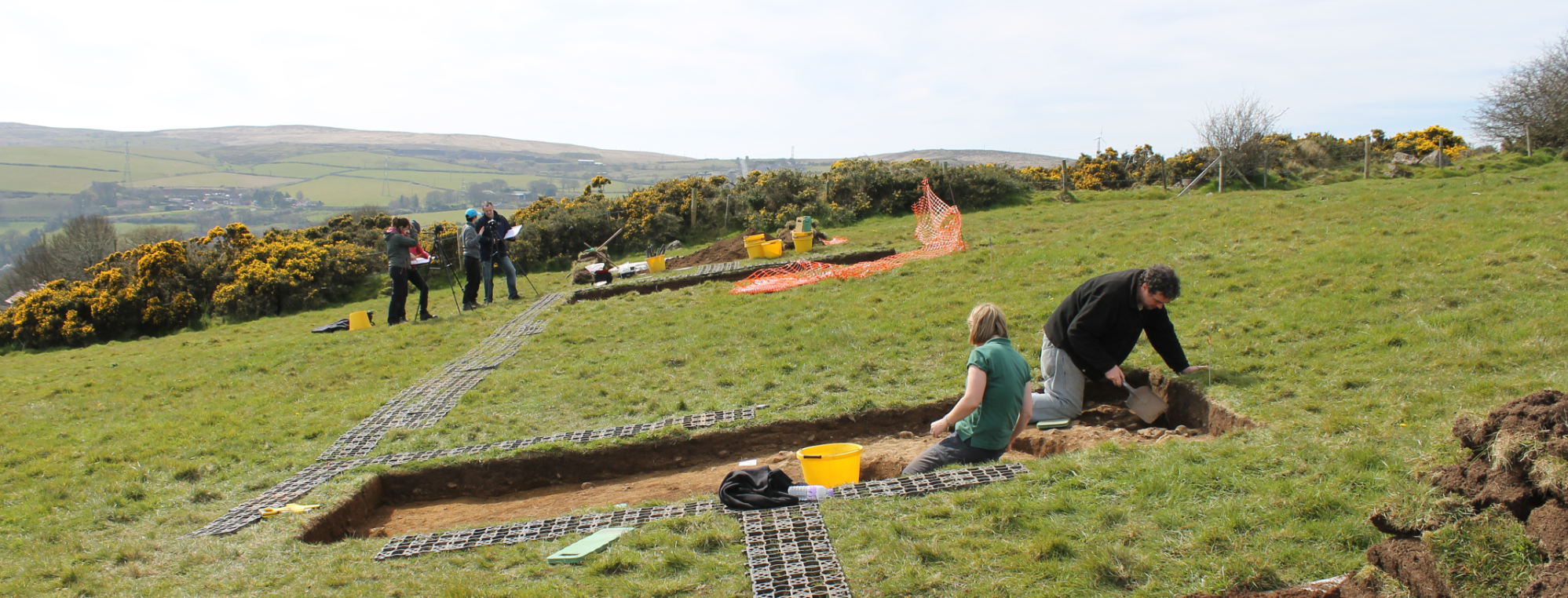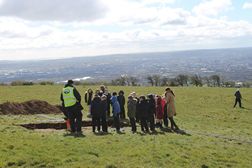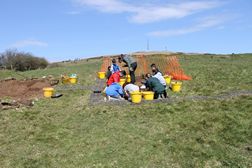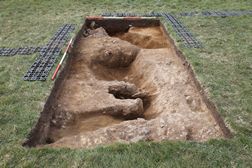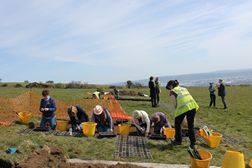Squires Hill
In April 2016 the Centre for Archaeological Fieldwork (CAF)was commissioned by Cultúrlann McAdam Ó Fiach and the Spectrum Centre to devise and lead a two-week community-based archaeological fieldwork programme on their behalf as part of the Farset Heritage Project, funded by the Heritage Lottery Fund. The site selected for the investigation was on the south-facing slope of Squire’s Hill on the outskirts of Belfast, in the townland of Ballysillan Upper and in the parish of Shankill. The dig was directed by Ruairí Ó Baoill and took place between 18th and 29th April 2016.
The 2016 excavation was undertaken close to where a range of prehistoric artefacts had previously been discovered in 1938 with the objective of investigating if this had once been the location of a settlement. The CAF excavation uncovered flint artefacts of an early Neolithic date (c.4000 BC to c.3500 BC) along with a number of subsoil-cut features that may have been foundations trenches for ancient structures. The close proximity of the source of the River Farset would certainly have made Squires Hill an attractive site for prehistoric people to base themselves while exploiting the flint outcrops that are found here and also at nearby Wolf Hill. While more than 100 Neolithic structures have been uncovered on archaeological excavations throughout Ireland, this is the first definitively identified example to have been discovered in the Belfast region. As such, it would seem that the site had been used by our “first farmer” ancestors, at a time when cereals, domesticated animals, pottery, and burial monuments had been introduced into Ireland. The investigation also discovered a simple blue bead from the Early Medieval period, and a selection of artefacts of Early Modern date, including sherds of ceramic vessels, glass, slate, clay tobacco pipes, an iron nail and a bottle stopper.
Ó Baoill, R. (2018) 'Archaeological Excavations at Squires Hill, Belfast, County Antrim', Ulster Journal of Archaeology Vol. 73 (2015-16), 59-67. Published in 2018.
The excavation was led by professional archaeologists, but this was a community-based programme that enabled members of the local community to participate in the fieldwork. Approximately 300 schoolchildren (including 10 classes/ 216 children from local schools) and adult volunteers participated in the excavation or visited the site during the course of the work, while there was an Open Day (Saturday 23 April 2016) when tours took place and artefacts uncovered during the excavation were on display for the public to see, as well as a photogrammetry workshop session carried out by the CAF’s Dr Siobhán McDermott.
